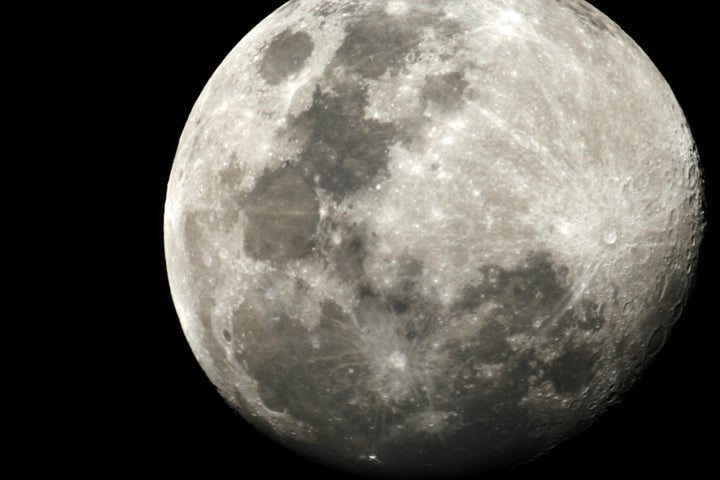The moon is concealing large deposits of water trapped under its surface, despite scientists previously believing it had been totally dried out on formation.
New research has confirmed that instead of being totally depleted of H2O, the lunar mantle (the interior rocky layer of the planet) actually has “unusually high” water deposits.
In fact, it is as rich in water as its Earthly neighbour.

Scientists had assumed for years that the interior of the moon had been largely depleted of water and other volatile mineral compounds, because of the way in which it came to exist.
Experts believe that the moon first formed from debris left behind after an object (about the size of Mars) slammed into Earth in early solar history, and that this impact would have burned up all the hydrogen, which is required for water to exist.
But new research, which began in 2008 at Brown University, has now proven that the moon does in fact contain substantial pools of indigenous water all over.
Nearly a decade ago, geologists examined volcanic glass beads brought back to Earth by the manned Apollo 15 and 17 missions in the early 1970s and detected trace amounts of water.
Then, in 2011, a further study of tiny crystalline formations within those beads revealed that they actually contain similar amounts of water as some basalts (volcanic rock) on Earth.
But Dr Ralph Milliken, lead author of the research, explained this still didn’t prove the existence of widespread water on the moon and further research was needed.
“The key question is whether those Apollo samples represent the bulk conditions of the lunar interior or instead represent unusual or perhaps anomalous water-rich regions within an otherwise dry mantle,” he said.
The most recent research, which analysed light reflected from deposits left on the moon’s surface, found that these water deposits were not isolated anomalies - there is water in nearly all of the large pyroclastic deposits (the products of volcanic explosions) that had been previously mapped across the Moon’s surface.
Dr Milliken said: “The distribution of these water-rich deposits is the key thing... they’re spread across the surface, which tells us that the water found in the Apollo samples isn’t a one-off.
“Lunar pyroclastics seem to be universally water-rich, which suggests the same may be true of the mantle.”
“The growing evidence for water inside the Moon suggest that water did somehow survive, or that it was brought in shortly after the impact by asteroids or comets before the Moon had completely solidified,” Li said. “The exact origin of water in the lunar interior is still a big question.”
This discovery could help future explorers who would not have to ferry large amounts of water from Earth, said the researchers whose findings appear in the journal Nature Geoscience.
